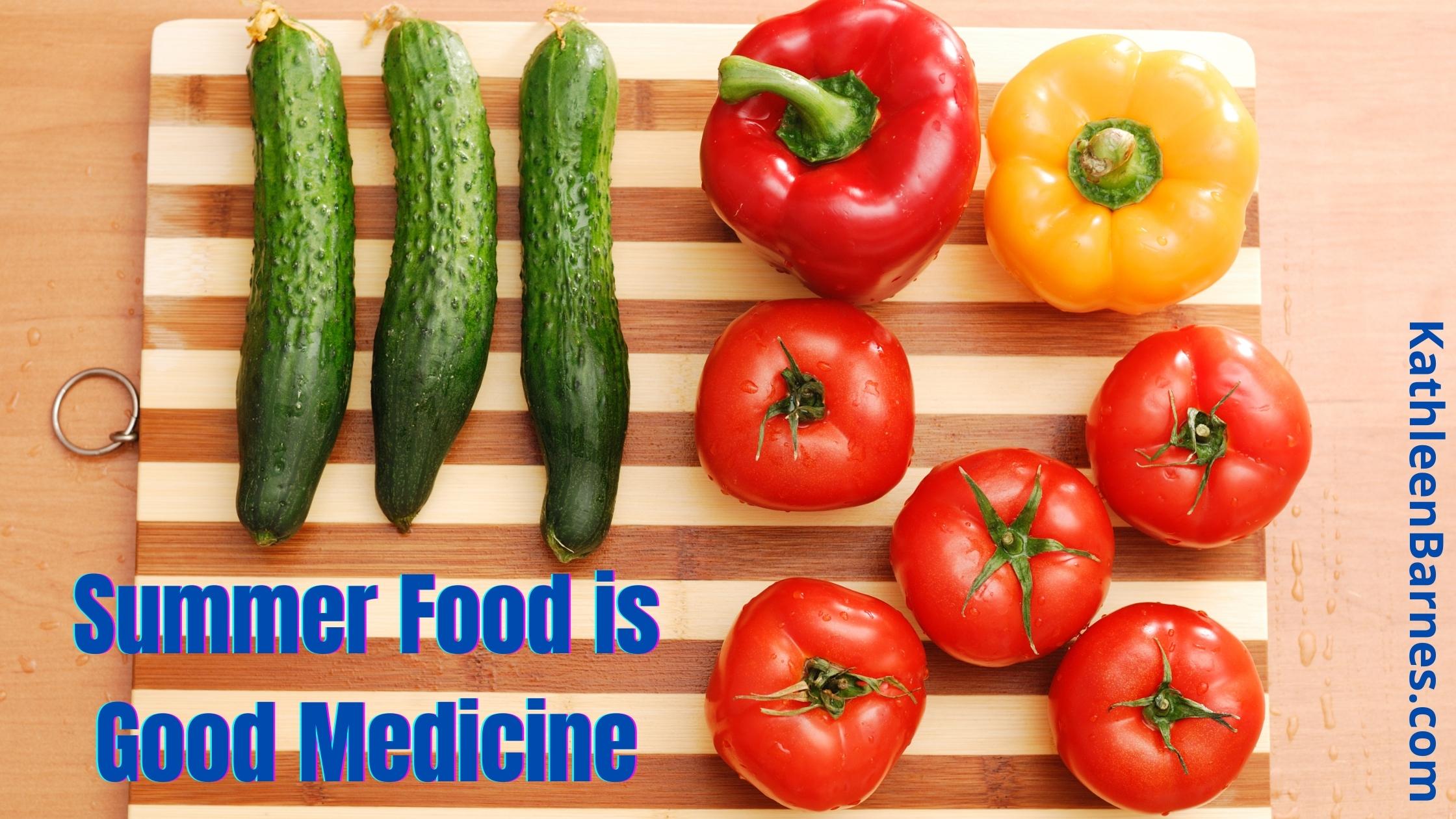 I don’t know about you, but I get pretty tired of apples and oranges and plastic tubs of organic lettuce and plastic tomatoes in the winter. So I couldn’t be happier with the advent of spring and the vastly expanded array of fruits and vegetables now available.
I don’t know about you, but I get pretty tired of apples and oranges and plastic tubs of organic lettuce and plastic tomatoes in the winter. So I couldn’t be happier with the advent of spring and the vastly expanded array of fruits and vegetables now available.
Variety is the spice of life, so we should all eat a wide variety of foods for optimal nutrition and for greatest wellness.
I confess that I frequently eat a meal right there in the garden. I grab a tomato or two (none of those yet, but they’re coming!) a cucumber and a pepper at this time of year and I am happy as a lark. They are quite literally seconds from being picked to my mouth. No cooking or chopping or clean up. What’s not to love about this healthiest possible meal?
As I wrote in my latest book, Food Is Medicine: 101 Prescriptions from the Garden, all fresh fruits and vegetables contain a wealth of disease-preventing properties.
Let’s take a quick look at my in-garden meal and just a handful of the disease conditions its components each can treat and prevent:
Tomatoes
Tomatoes and other garden foods high in vitamin C (including green peppers) are often used to stimulate appetite. Appetite loss is often a result of a high stress lifestyle.
The high vitamin C content of tomatoes is also a natural anti-histamine, often used to prevent asthma and to treat and prevent allergies.
The vitamin C content of tomatoes helps strengthen connective tissue so it can prevent or minimize bruising.
Tomatoes are a source of carotenoids that offer so many health benefits, including lycopene, which has been study-proven to reduce the risk of breast, prostate, pancreatic and colo-rectal cancers. One study shows that lycopene actually kills mouth cancer cells.
Their rich supply of lysine makes them a natural way to suppress the herpes virus that causes cold sores.
For people with celiac disease or less severe gluten intolerance, vitamin C deficiencies are common. Tomatoes can help bridge that gap. Much the same mechanism applies to chronic fatigue and fibromyalgia.
Peppers
I’m thinking of green peppers, although hot peppers have their own potent healing properties. Peppers are an excellent source of vitamin C, so most of what applies to tomatoes also applies to peppers.
Here are a few unique ways peppers help heal:
Lung inflammation and chronic obstructive pulmonary disease:
The high vitamin C levels help reduce lung damage caused by environmental toxins and cigarette smoke.
Likewise, gum disease is often a sign of vitamin C deficiency, so C-rich peppers can help address gum problems.
The C content of peppers can also help spark internal moisturizers and resolve issues with dry skin.
Peppers are also a great source of salicylic acid (the same stuff that is in aspirin), so they are good pain relievers and are especially effective against headaches and their anti-viral properties can also help sinusitis.
Cucumbers
Think of soothing, cooling cukes and you’ve got the idea: They’re great for any type of inflammation.
If you have sore eyes, even conjunctivitis, cucumber compresses will cool the pain and help reduce inflammation. The same applies for sunburn.
They are also an excellent source of an anti-inflammatory pigment called beta-cryptoxanthin, a carotenoid found in brightly colored fruits and vegetables that lowers the risk of rheumatoid arthritis.
Cucumbers offer excellent nutrition for your hair, whether you eat them for their abundant mineral content or grate them and wear them on your head for a few minutes to nourish your skin, improve circulation to your scalp, and ease itchiness. However, if you’re wearing them on your head, I suggest you don’t answer the door or Facetime calls!
These health benefits of my favorite foods are just the tip of the iceberg of the medicines you can find in your garden or your farmers’ market.
You might want to keep a copy of my book, Food Is Medicine, as a reference for those times when minor or major health problems arise. Better yet, read it through and use these fresh, healthy and delicious foods to keep you healthy.







